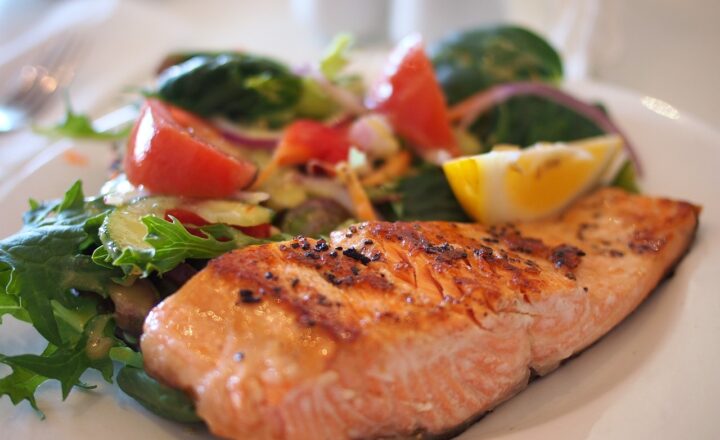From Rotten Herring to Fermented Seal: The World’s Weirdest Traditional Dishes
November 13, 2024

Food culture varies remarkably across the globe, yielding a plethora of unusual, unique, and sometimes downright bizarre traditional dishes. While many of us might be familiar with sushi, pasta, or tacos, others are exposed to culinary experiences that push the boundaries of taste and perception. In this exploration, we will dive into the world of the strangest traditional dishes—from the pungent fermented herring of Sweden to the intriguingly fermented seal of Alaska.
1. Surströmming – Sweden’s Famous Fermented Herring
Surströmming, or fermented herring, is often cited as one of the smelliest foods in the world. This Swedish dish is made from herring that has been bloated and fermented. The process begins with catching the fish during the spawning season and then rinsing, salting, and placing it in barrels for fermentation. Once fermentation is complete, the fish is canned, and it continues to ferment in the can, producing a significant amount of gas.
Known for its pungent odor reminiscent of rotten eggs and strong cheese, surströmming is traditionally enjoyed with thin flatbreads, potatoes, and onions. The locals often eat it outside due to its overpowering smell, which can cause reluctance among tourists.
2. Hakarl – Iceland’s Fermented Shark
Hakarl, or fermented Greenland shark, is another dish that may frighten culinary adventurers. The shark is buried in the ground for several months to ferment, after which it is hung to dry. The result is a dish that has a strong ammonia smell and a taste that some describe as similar to strong cheese or fishy jelly.
Icelanders commonly consume hakarl as a delicacy, often washing it down with a shot of Brennivín, a local schnapps. The dish has a cultural significance in Iceland, being a traditional food source from the time of the Vikings.
3. Casu Marzu – Sardinia’s Live Cheese
Casu Marzu, also known as “maggot cheese,” is a traditional Sardinian delicacy that contains live insect larvae. Made from sheep’s milk, this cheese undergoes fermentation, and as it decomposes, it becomes soft. The larvae of cheese flies (Piophila casei) are intentionally introduced to the cheese, turning it into a gooey delicacy.
While some eat it with the larvae still inside, others prefer to remove them before consumption. This treat is known for its creamy texture and intense flavor, although it is often shrouded in controversy due to health regulations around the consumption of live insects.
4. Escamoles – Ant Larvae from Mexico
Hailing from Mexico, escamoles are the edible larvae of ants, particularly the Liometopum species. Referred to as “insect caviar,” these ant larvae are harvested from the roots of agave plants and are traditionally enjoyed in tacos or sautéed with butter and spices.
Known for their slightly nutty flavor and soft texture, escamoles hold cultural significance, often seen as a delicacy eaten during special occasions. Their unique taste makes them a culinary gem, attracting adventurous food lovers.
5. Sannakji – Live Octopus from Korea
Sannakji is a traditional Korean dish made from live octopus that is cut into digestible pieces and served immediately. The octopus is usually seasoned with sesame oil before being served, and its tentacles continue to move on the plate. Eating sannakji offers a unique experience, as the suction cups on the tentacles can make it challenging to consume.
Although it may sound daunting to many, this dish is cherished in Korea for its freshness and rich flavor. Enjoyed with a side of dipping sauces, sannakji remains a popular option among thrill-seeking food enthusiasts.
6. Fermented Seal – Alaskan Tradition
In Alaskan Native cultures, fermented seal is a traditional food source that has been consumed for generations. The seal meat is buried in the ground for several months, allowing it to ferment and develop a distinct aroma and flavor. Locals describe the taste as gamey, with deep ocean undertones, and it is typically accompanied by other naturally sourced foods.
Despite its strong flavor—a combination of saltiness, sweetness, and hints of fish—the practice of consuming fermented seal is rich with cultural heritage and tradition, proving the adaptability of indigenous foods to harsh environments.
Conclusion
The world is filled with an incredible diversity of culinary traditions, many of which feature bizarre but culturally significant dishes. From fermented fish and cheese to live seafood, these delicacies reveal just how unique and diverse our global food culture is. Whether you’re an adventurous eater or someone who appreciates cultural heritage, trying these eccentric dishes can offer insights into the stories and lives of those who cherish them. As we explore the world of gastronomy, it’s essential to be open-minded and respectful toward these traditional foods, celebrating the variety that enriches our culinary landscape.







